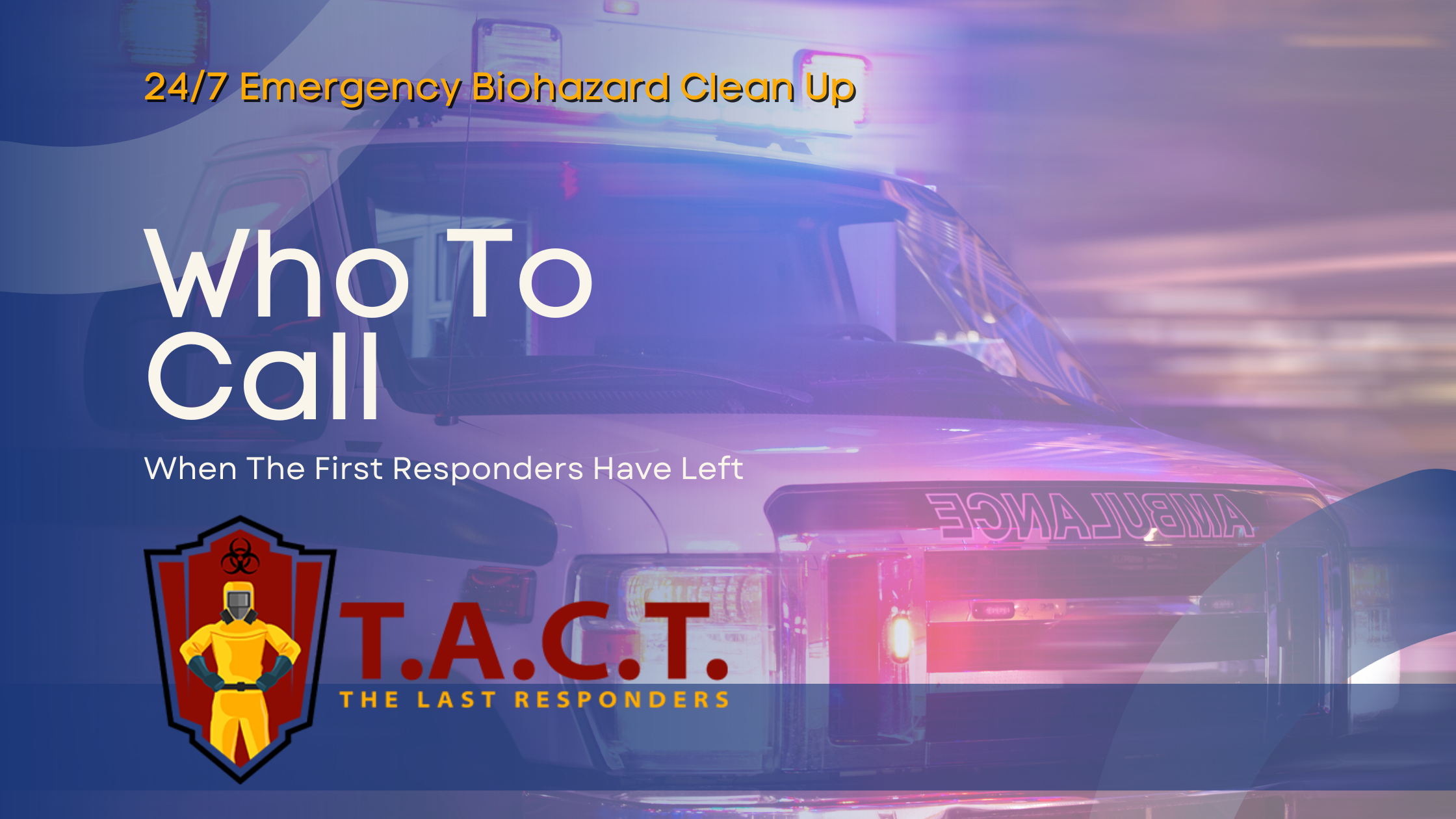Homeless encampment cleanup
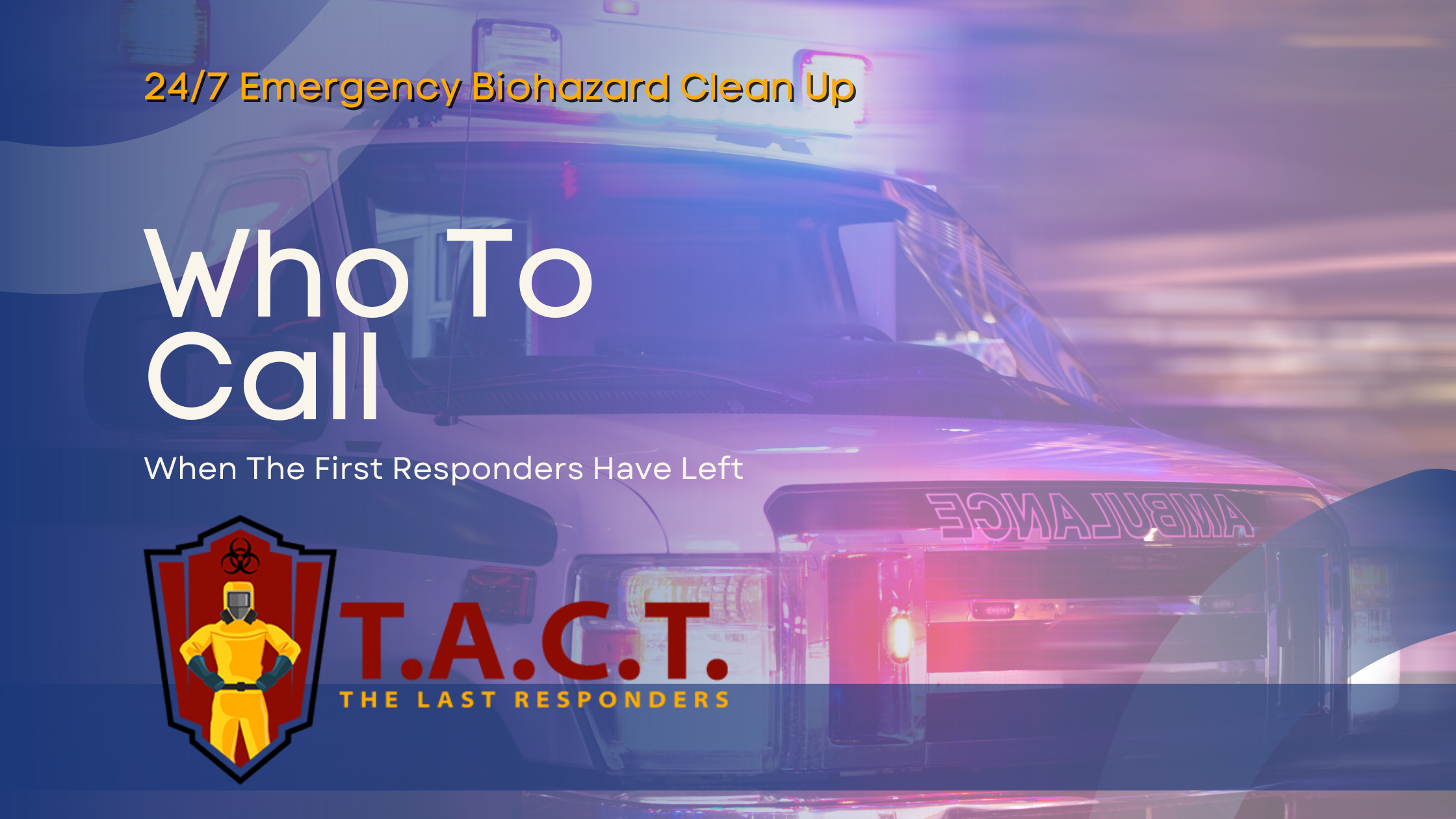
Homeless Encampment Cleanup: A Comprehensive Guide to Safe and Effective Abatement
The homelessness crisis has reached unprecedented levels across American cities, with tent cities and encampments becoming increasingly common on public property, in parks, and along public right of way areas. These homeless encampments present serious health and safety concerns for both encampment residents and the general public, requiring specialized cleanup procedures that address biohazards, property damage, and human services needs.
Professional homeless encampment cleanup involves far more than simple trash removal. It requires coordinated efforts between city departments, metropolitan police department personnel, and specialized cleanup crews trained in biohazard disposal and decontamination. The process must balance public safety with respect for homeless people and their personal belongings while ensuring compliance with federal laws and local regulations.
This comprehensive guide covers everything property owners, city staff, and community leaders need to know about safe and effective encampment abatement, from initial assessment through long-term prevention strategies.
Understanding Homeless Encampment Cleanup
Homeless encampment cleanup refers to the systematic removal of debris, hazardous waste, and structures from makeshift living areas used by homeless individuals. Unlike simple waste disposal, these operations require specialized knowledge of biohazard handling, legal notice requirements, and coordination with human services agencies.

The legal framework governing cleanup procedures varies by jurisdiction but typically includes mandatory 14-day notice requirements for encampment residents. This advance notice period allows outreach teams to connect homeless people with emergency shelters and mental health services before cleanup begins. The Trump administration issued federal executive orders mandating cleanup of encampments on federal land, while local governments have developed their own protocols for addressing sites on public and private property.
Cross-agency coordination forms the backbone of effective encampment response. Metropolitan police department officers provide safety oversight, while environmental services staff handle waste management and city departments coordinate outreach efforts. This multi-agency approach ensures that cleanup operations address both immediate safety concerns and longer-term housing needs for displaced residents.
The distinction between emergency cleanups and scheduled abatement procedures is crucial for legal compliance. Emergency situations involving immediate public health threats may proceed without full notice periods, while routine cleanups must follow established protocols including proper documentation and property storage procedures.
Health and Safety Hazards in Encampments
Homeless encampments present unique health and safety challenges that require specialized cleanup protocols. Understanding these hazards is essential for protecting both cleanup crews and the broader community.
Biohazard risks represent the most serious concern in encampment cleanup operations. Human waste, blood, and other bodily fluids create infectious disease transmission risks that can affect the general public. Professional cleanup teamsmust use personal protective equipment and follow strict decontamination procedures to prevent exposure to hepatitis, HIV, and other bloodborne pathogens.
Fire hazards from propane tanks, damaged batteries, and accumulated solid waste pose immediate dangers to both residents and surrounding properties. Makeshift electrical connections and open flames for heating create ongoing risks that emergency services must address during cleanup operations. These hazards often require coordination with fire departments and utility companies to ensure safe disconnection of dangerous systems.
Drug paraphernalia presents additional safety concerns requiring specialized disposal methods. Used needles, contaminated pipes, and other substance abuse materials must be handled using proper containers and disposal protocols to prevent injury to cleanup crews and the public.

Vector attraction from waste accumulation creates public health risks extending beyond the immediate encampment site. Rodents, insects, and other pests attracted to food waste and standing water can spread disease to nearby businesses and residential areas. Professional cleanup services address these concerns through comprehensive site decontamination and ongoing monitoring.
Structural hazards from makeshift shelters pose risks to both residents and cleanup crews. Unstable constructions using pallets, tarps, and salvaged materials can collapse during removal operations, requiring careful assessment and systematic dismantling by trained personnel.
The Professional Cleanup Process
Professional homeless encampment cleanup follows a structured process designed to ensure safety, legal compliance, and effective site remediation. This systematic approach protects all involved parties while addressing the complex challenges these sites present.
Initial site assessment forms the foundation of any effective cleanup operation. Professional teams evaluate the scope of contamination, identify specific hazards, and determine the resources needed for safe completion. This assessment includes cataloging structures, estimating waste volumes, and noting any immediate safety concerns that require emergency response.
Coordination with law enforcement ensures safety for cleanup crews while facilitating connections between encampment residents and available services. Metropolitan police department officers often provide security during operations while outreach teams offer homeless shelter options and assistance with accessing mental health services and substance abuse treatment programs.
Personal protective equipment requirements for cleanup crews include respirators, chemical-resistant gloves, and full-body protection suits. The contaminated environment requires industrial-grade protection that exceeds standard construction safety equipment. Specialized training ensures crews understand proper donning and doffing procedures to prevent exposure.
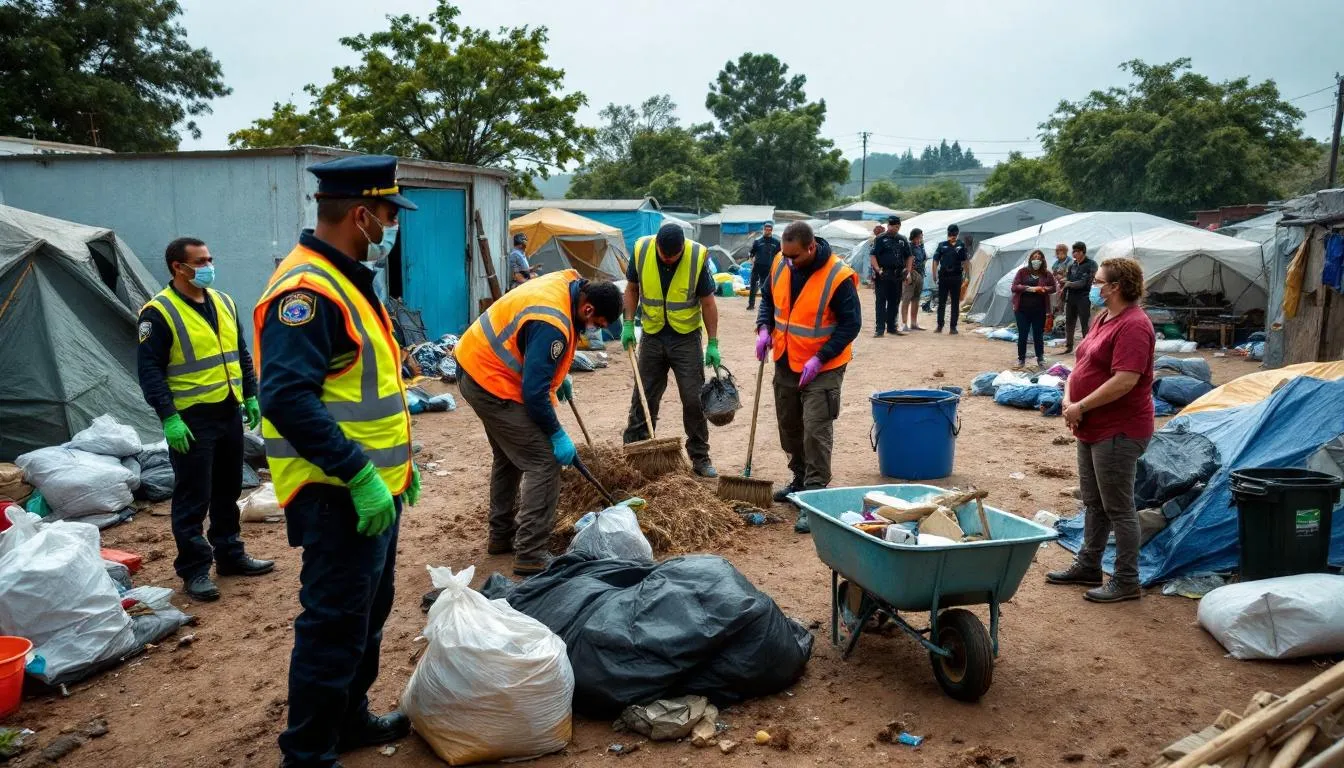
Documentation procedures maintain accountability and legal compliance throughout the process. Teams photograph sites before and after cleanup, maintain detailed logs of materials removed, and document efforts to preserve and return personal belongings to their owners. This documentation protects against legal challenges while providing transparency for community stakeholders.
Property Sorting and Documentation
The handling of personal belongings during encampment cleanup requires careful attention to legal requirements and humanitarian considerations. Property sorting and documentation procedures protect the rights of encampment residents while ensuring public safety.
Identification and separation of valuable personal belongings follows established protocols that prioritize items with clear personal significance. Important documents like identification cards, photographs, prescription medication, and jewelry receive special handling and storage. These items are cataloged and held for retrieval by their owners according to local regulations.
Impoundment procedures for bicycles in ridable condition recognize that these vehicles often represent essential transportation for homeless individuals. Functional bicycles are stored separately and made available for owner retrieval through established processes that typically allow 30-60 days for claims.
Disposal criteria for contaminated items protect public health while respecting property rights. Items showing moisture damage, food waste contamination, or contact with drug paraphernalia are disposed of immediately due to health risks. Clear documentation of disposal reasons protects agencies from legal challenges while ensuring appropriate handling of potentially dangerous materials.
Recording and storage systems for retrieved personal property must balance accessibility for rightful owners with security and organization. Many cities use computerized tracking systems that allow individuals to search for their belongings using identifying information or descriptions.
Waste Categories and Disposal Methods
Effective encampment cleanup requires understanding different waste categories and their appropriate disposal methods. This knowledge ensures environmental protection while maintaining cost-effective operations.
Standard waste removal includes furniture, appliances, clothing, and shelter materials that can be disposed of through normal municipal waste systems. However, the volume of materials often requires specialized hauling equipment and coordination with solid waste management facilities to handle the increased load.
Hazardous material handling becomes necessary for items like aerosol cans, batteries, paint, and electronics that require special disposal methods. These materials cannot enter standard waste streams and must be processed through certified hazardous waste facilities. Proper identification and separation prevent environmental contamination and regulatory violations.
Biohazard disposal protocols govern the handling of medical waste, bodily fluids, and contaminated materials that pose infectious disease risks. These materials require specialized containers, labeling, and disposal through licensed medical waste management companies. The process follows strict federal and state regulations designed to protect public health.
Special handling procedures for abandoned vehicles and construction materials often involve coordination with multiple agencies. Vehicles may require towing and processing through appropriate channels, while construction debris needs evaluation for asbestos or other regulated materials before disposal.
Common Encampment Locations and Cleanup Challenges
Different encampment locations present unique challenges that require adapted cleanup strategies. Understanding these location-specific factors helps ensure effective and safe operations while addressing community concerns.
Urban locations including sidewalks, underpasses, and downtown areas often involve complex logistics due to traffic, pedestrians, and business operations. Cleanup teams must coordinate with city departments to manage street closures, maintain safe passage for pedestrians, and minimize disruption to local businesses. These locations frequently require rapid response capabilities due to high visibility and community impact.

Parks and natural areas require special environmental protection measures during cleanup operations. Teams must prevent contamination of water sources, protect vegetation, and ensure proper disposal of waste without damaging sensitive ecosystems. These locations often involve coordination with environmental agencies and may require specialized equipment for terrain access.
Bridge overpasses and vacant properties present access challenges that require specialized equipment and safety protocols. Limited access routes may necessitate manual removal methods and smaller vehicles, while structural concerns require engineering assessment before cleanup begins. These locations often attract repeated encampment activity due to weather protection and reduced visibility.
Private property versus public land cleanup involves different jurisdictional considerations and legal requirements. Property owners may need to coordinate with local governments for waste disposal while maintaining responsibility for site security and ongoing prevention measures. Legal obligations vary significantly between private and public property situations.
Adaptation of cleanup methods based on location-specific conditions ensures effective operations while respecting community needs. High-traffic areas may require expedited procedures, while sensitive locations need extended planning and environmental protection measures.
Legal and Regulatory Compliance
Understanding the legal framework governing homeless encampment cleanup ensures compliance with federal, state, and local requirements while protecting the rights of all involved parties. This complex regulatory environment requires careful navigation to avoid legal challenges and maintain community support.
Federal executive orders during recent administrations have mandated cleanup of encampments on federal land, establishing precedents for addressing public camping and waste accumulation. These orders provide legal authority for cleanup operations while emphasizing the need for coordinated response that includes housing and services for displaced individuals.
State codes address dumping, littering, and public nuisances through specific regulations that support encampment abatement efforts. California Penal Code Section 373a, for example, prohibits dumping waste on public or private property and provides legal authority for cleanup operations. Similar laws in other states create frameworks for addressing encampment-related waste and safety concerns.
Local ordinances supplement state laws with specific procedures for encampment abatement that reflect community needs and resources. These ordinances typically establish notice requirements, property storage procedures, and coordination protocols between different city departments and service providers.
Supreme Court rulings have supported bans on public camping while emphasizing the need for adequate alternatives and due process protections. These decisions provide legal clarity for enforcement efforts while establishing requirements for notice periods and service offerings that must accompany cleanup operations.
Notice requirements and due process protections ensure that encampment residents receive adequate warning and opportunities to relocate voluntarily. The typical 48-72 hour notice period allows time for outreach efforts and voluntary compliance while meeting constitutional requirements for due process.
Coordinated Agency Response
Effective homeless encampment cleanup requires coordination between multiple agencies, each contributing specialized expertise and resources. This collaborative approach ensures comprehensive response while avoiding duplication of efforts and conflicting priorities.
The role of deputy mayor for health and human services in managing protocols provides high-level coordination and policy guidance for encampment response efforts. This leadership ensures consistent application of procedures while facilitating communication between different agencies and community stakeholders.
Metropolitan police department coordination focuses on safety and law enforcement aspects of cleanup operations. Officers provide security for cleanup crews, facilitate voluntary compliance from encampment residents, and address any criminal activity that may complicate operations. Their presence also ensures officer safety while enabling outreach teams to connect residents with available services.

Department of public works involvement covers the logistical aspects of cleanup operations, including equipment provision, waste hauling, and site restoration. These teams handle the physical removal and disposal of materials while coordinating with environmental services staff to ensure proper handling of hazardous materials.
Environmental services staff responsibilities encompass waste management, contamination assessment, and site decontamination procedures. Their expertise ensures compliance with environmental regulations while protecting public health through proper handling of biohazards and contaminated materials.
Outreach teams provide the crucial link between enforcement and services, offering homeless shelter options, mental health services, and assistance with benefits applications. Their work before, during, and after cleanup operations helps connect individuals with housing and support services that address underlying causes of homelessness.
Professional Cleanup Services
Professional cleanup companies provide specialized expertise and equipment that municipal crews often lack, making them valuable partners in encampment abatement efforts. These services offer comprehensive solutions that address both immediate cleanup needs and long-term site management.
Benefits of hiring a certified professional cleanup company like T.A.C.T. North Atlanta include access to specialized training, advanced equipment, and established procedures for handling complex contamination scenarios. These companies maintain certifications in biohazard cleanup, have experience with legal compliance requirements, and can mobilize quickly when community needs arise.
24/7 availability for emergency response ensures that urgent public health and safety concerns receive immediate attention. When encampments present immediate dangers from fire hazards, disease outbreaks, or structural instability, professional services can respond rapidly to mitigate risks while coordinating with local authorities.
Advanced equipment and specialized training for decontamination provide capabilities that exceed standard municipal resources. Industrial-grade protective equipment, specialized cleaning chemicals, and trained personnel ensure thorough site remediation that meets public health standards and regulatory requirements.
Discretion, empathy, and community well-being priorities guide professional services in their approach to encampment cleanup. Experienced companies understand the sensitive nature of these operations and work to minimize trauma for displaced individuals while maintaining respect for human dignity throughout the process.
Free quote processes and continental United States service coverage make professional services accessible to communities across the country. This accessibility ensures that smaller municipalities and rural areas can access specialized expertise when needed, regardless of their size or local resources.
Prevention and Long-term Management
Preventing the reestablishment of encampments requires ongoing attention and strategic planning that extends beyond initial cleanup operations. Effective long-term management addresses both immediate site security and underlying factors that attract encampment activity.
Strategies to prevent illegal dumping at closed encampment sites include physical barriers, increased lighting, and regular monitoring by city staff or security personnel. Property owners and local governments often install fencing, gates, or landscaping features that make areas less suitable for camping while maintaining aesthetic appeal and legitimate uses.
Ongoing monitoring helps identify new encampment activity before it becomes established, typically requiring attention within the first few weeks of initial settlement. Research indicates that without intervention, cleared sites often see reoccurrence of encampment activity within 3-5 years, making consistent monitoring a crucial component of long-term management strategies.
Property standards enforcement maintains health and safety compliance through regular inspections and prompt response to violations. This proactive approach prevents the accumulation of conditions that attract encampment activity while ensuring that property owners maintain their responsibilities for site security and cleanliness.
Permitted encampment waste management guidelines provide frameworks for communities that choose to establish sanctioned camping areas. These guidelines ensure proper sanitation, waste disposal, and site management while providing temporary housing solutions during housing shortage crises.
Community education on proper waste disposal and reporting procedures helps residents identify and report illegal dumping or early encampment activity. Public awareness campaigns and clear reporting channels enable communities to participate in prevention efforts while building support for comprehensive responses to homelessness.
Support Services and Housing Solutions
Addressing encampment cleanup effectively requires connecting displaced individuals with housing and support services that address underlying causes of homelessness. This comprehensive approach reduces recidivism while supporting human dignity and community well-being.
CARE pilot programs provide intensive onsite case management that connects individuals with housing, mental health services, and substance abuse treatment before and during cleanup operations. These programs recognize that successful encampment resolution depends on addressing the complex needs of homeless people rather than simply removing them from public spaces.
The housing first model focuses on placement in permanent housing before requiring participation in behavioral health treatment or other services. This approach has shown success in reducing returns to homelessness while providing stable platforms for addressing mental health and substance abuse issues that contribute to encampment living.
Homeless shelter bed availability and social services connection during cleanup operations ensure that displaced individuals have immediate alternatives to returning to the streets. Outreach teams work to identify available beds and facilitate intake processes that minimize barriers to shelter access.
Consequences for refusing shelter or services may include fines and jail time in some jurisdictions, though advocates argue that these approaches often prove counterproductive. Effective programs focus on removing barriers to service access rather than criminalizing poverty and homelessness.
Statistical dashboard tracking for service engagement and housing navigation provides data needed to evaluate program effectiveness and identify areas for improvement. These systems track outcomes including shelter placement rates, successful housing transitions, and recidivism to inform policy decisions and resource allocation.
The coordination of cleanup operations with robust support services creates opportunities for positive outcomes that extend beyond immediate site remediation. When communities invest in both professional cleanup services and comprehensive support programs, they can address homelessness more effectively while maintaining public health and safety.
Professional homeless encampment cleanup represents a critical component of comprehensive community responses to homelessness. By understanding the complexities involved in safe and effective abatement, communities can protect public health while respecting human dignity and working toward long-term solutions. Whether you’re a property owner dealing with encampment issues or a municipal official developing response protocols, partnering with certified professionals like T.A.C.T. North Atlanta ensures that cleanup operations meet legal requirements while supporting broader community goals for addressing the homelessness crisis.
Latest news
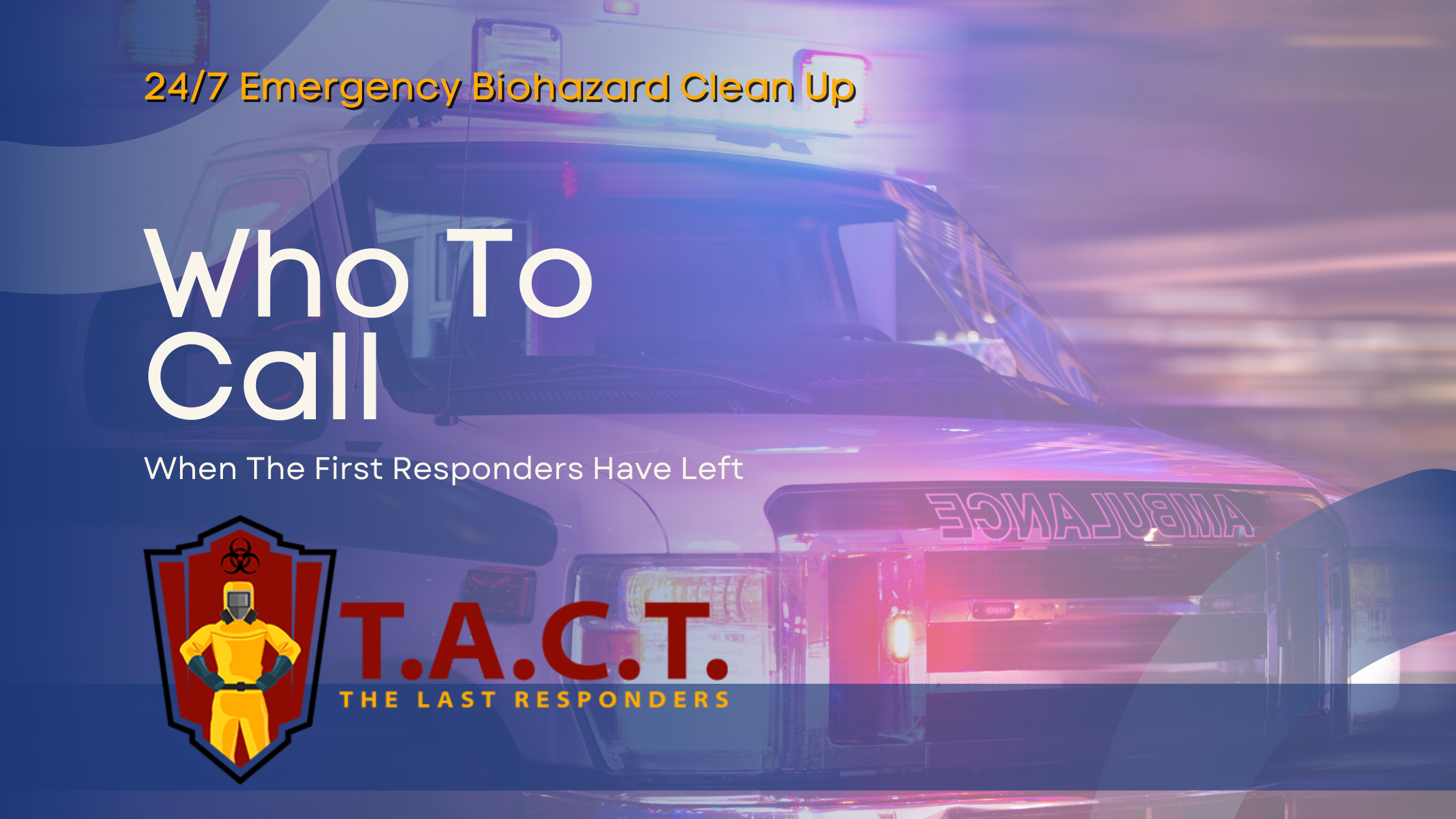
Bio Cleaning Services
Read More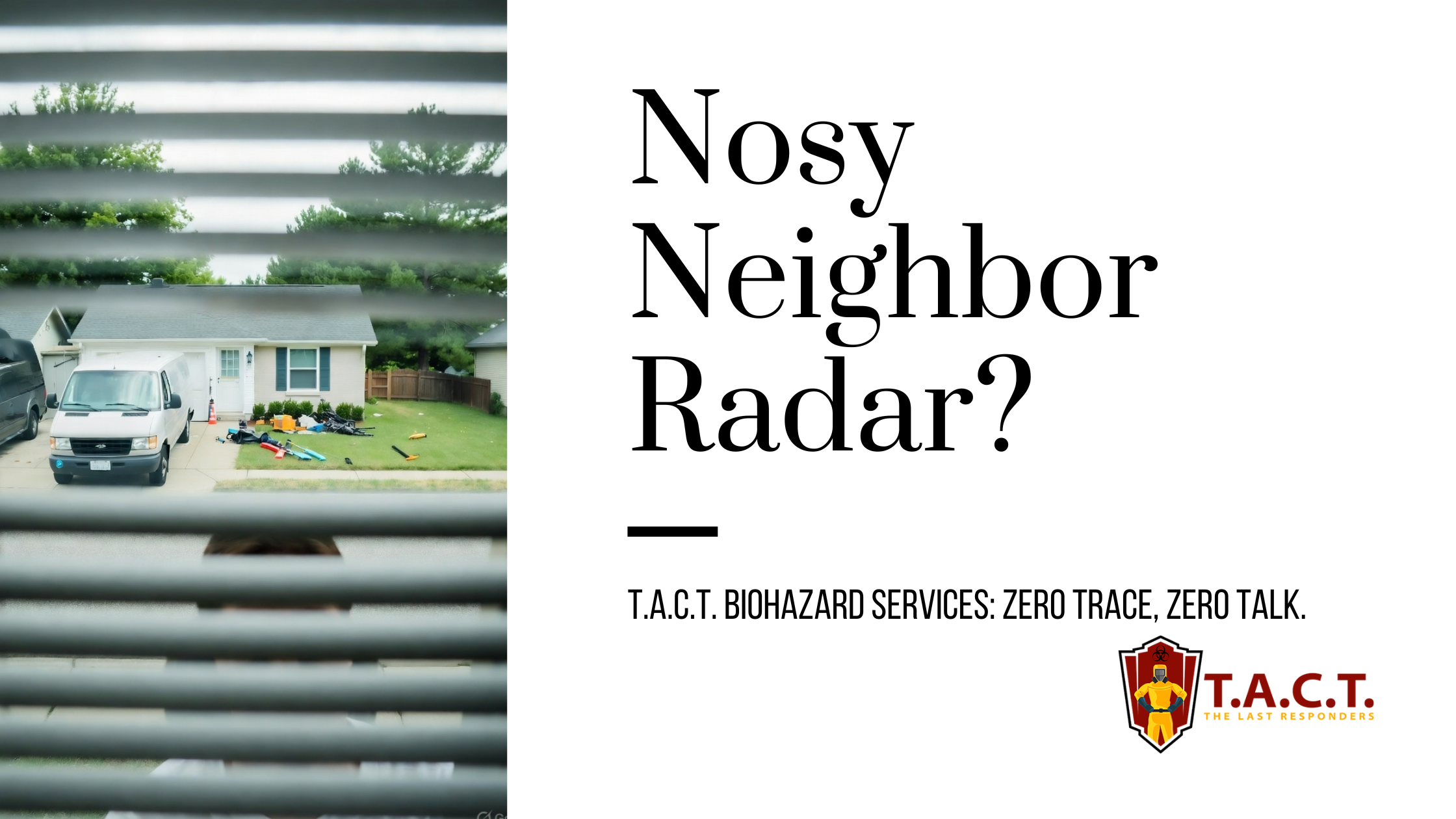
Nosy neighbors peeking? T.A.C.T. North Atlanta offers discreet biohazard remediation for rodent infestations, mold, hoarding, and more. Unmarked vehicles, quiet experts, full privacy—24/7 service at 470-781-4775.
Read More
